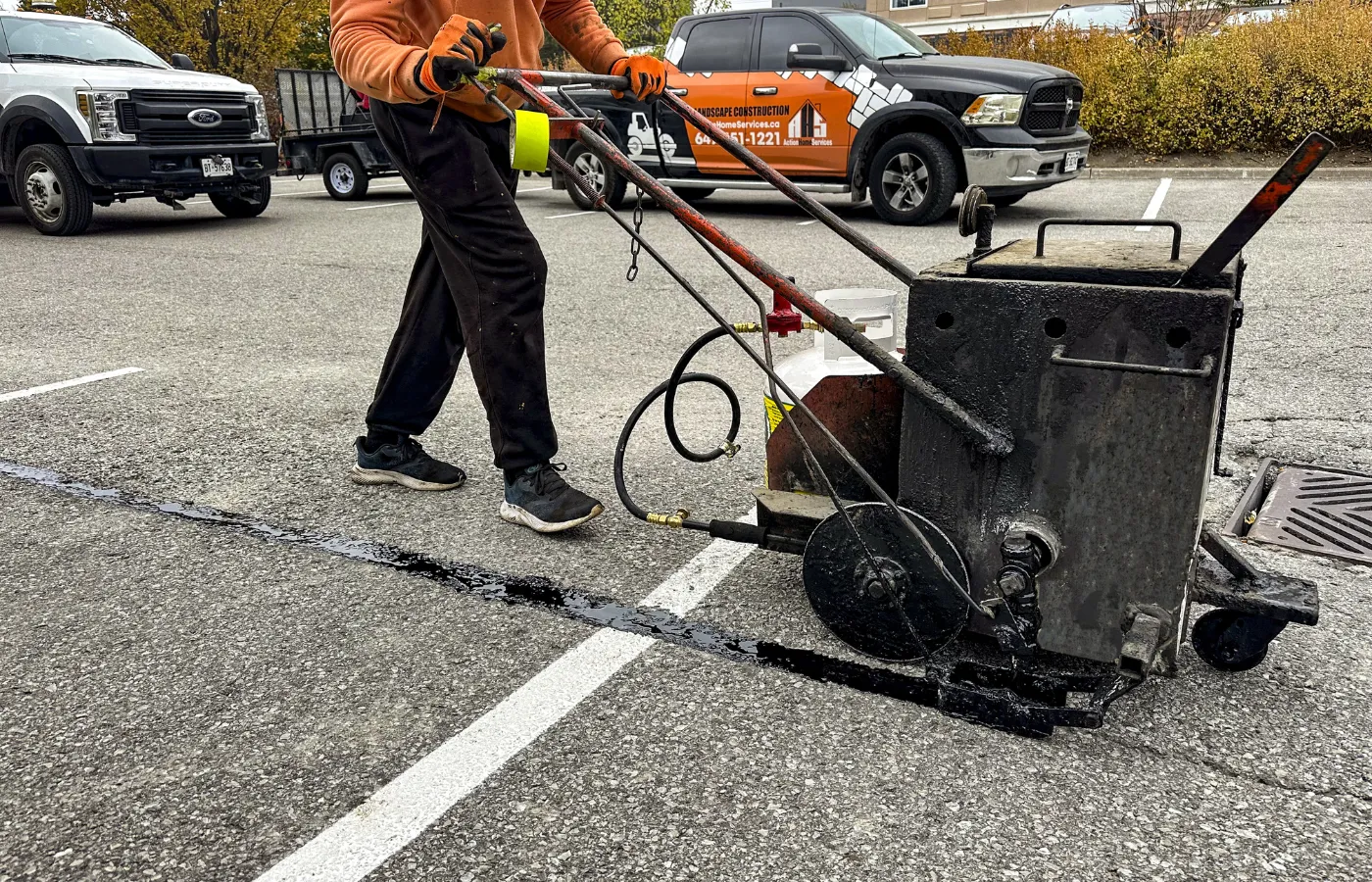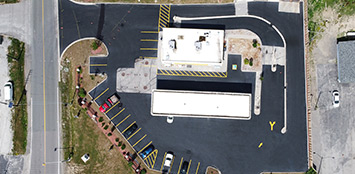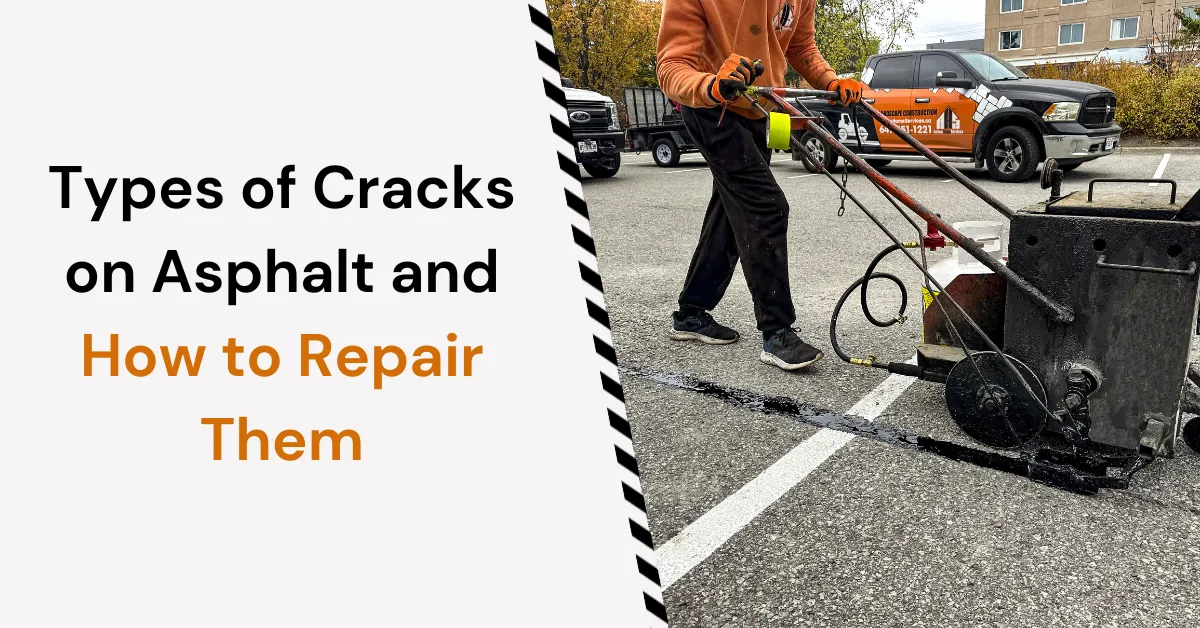Asphalt is a durable material, but over time, exposure to traffic, weather, and general wear can lead to cracks. Identifying the different types of asphalt cracks like alligator cracks or edge cracks, which are signs that something might be off with the foundation or drainage. Understanding the appropriate repair methods can help maintain your driveway or parking lot, preventing costly damage and ensuring a smooth, safe surface. This guide covers common asphalt crack types, their causes, and effective repair solutions to extend the life of your pavement
Here’s an in-depth list of asphalt crack types and the best methods of fixing driveway asphalt cracks in order to keep your pavement in top condition.
Different Types of Asphalt Cracks
1. Spider Web or Alligator Skin Cracks
They have a spider web look or resemble an alligator’s skin. They are indications of severe structural issues in the asphalt, usually the consequence of a compromised foundation, excessive load, or poor drainage.
Cracks Repairing Strategy:
- Unfortunately, these types of cracks cannot be permanently repaired by filling them.
- The best solution is to seal them with a heavy-duty asphalt sealant in order to minimize further breakdown and beautify the driveway.
- In serious cases, professional resurfacing of asphalt or full-depth patching is necessary to restore the base.
2. Water-Based Sealant Cracks
Thin, superficial cracks can appear from time to time after a water-based sealant has been applied. This happens when the sealant contracts or does not stick due to weather conditions or improper application.
Cracks Repairing Strategy:
- Such cracks are typically too shallow to be filled.
- The best option is to reapply a high-quality, oil-based asphalt sealant to create an even, protective layer over the surface.
- Regular sealcoating maintenance keeps these cracks from widening.
3. Pencil Width Small Cracks on Asphalt
Small cracks are a natural state of asphalt wear and tear and typically are the result of temperature changes and minor surface deterioration. Although seemingly trivial, they allow water intrusion, which will develop into larger cracks if not sealed.
Cracks Repairing Strategy:
- Extremely tiny cracks do not need crack filling.
- An excellent asphalt sealer applied will prevent water intrusion and prevent further widening of cracks.
- To provide extra protection, sealcoating needs to be done every 2-3 years.
4. Edge Cracks – Pavement Damage Along the Edges
Edge cracks occur on the borders of an asphalt driveway or road. Cracks in asphalt typically develop due to improper drainage, settlement of soil, or asphalt drying.
Cracks Repairing Strategy:
- Sealing the cracks with polymeric sand is a great choice as it fills the gaps and also prevents weeds from growing.
- Melted rubber crack sealant or asphalt crack filler provides a more permanent fix for wider or deeper edge cracks.
- Edge maintenance and drainage improvements avoid future cracks.

5. Wide Cracks on Asphalt (More than 2 Inches in Width)
Wider cracks indicate severe asphalt stress and require more robust repair material. Freeze-thaw, poor ground support, or excessive loading from vehicle traffic could create these.
Cracks Repairing Strategy:
- The ideal compound to repair wide cracks is melted rubber because it can remain flexible and not crack once again.
- Also, rubber wire applied with a blow torch may be used to create a snug, watertight seal.
- For highly extensive damage or weakened areas, hot mix asphalt application or patching with asphalt may be required.
6. Regular or Linear Cracks
These are common asphalt surface cracks that appear in straight or moderately curved lines. They are generally caused by natural expansion and contraction of the asphalt due to changing temperatures.
Cracks Repairing Strategy:
- Bottled crack filler is an easy, effective method for treating smaller linear cracks.
- For extra support, using melted rubber crack fillers can provide a stronger, longer-lasting seal.
- Blow torch sealing using rubber wire is another method for strengthening the cracks and preventing water infiltration.
How to Prevent Cracks and Maintain the Surface Smooth
While cracks are inevitable in the long term, regular maintenance can help ensure that minor cracks do not turn into costly repairs. Some positive asphalt crack prevention measures are:
Frequent Sealcoating – Seal with a good-quality asphalt sealant every 2-3 years to create a water barrier, UV protection, and traffic wear shield.
Early Crack Repairs – Repairing cracks in advance prevents water infiltration and expensive repairs down the line.
Proper Drainage – Ensure that your driveway or parking lot has adequate water runoff to prevent pavement cracking and erosion.
Avoid Heavy Loads – Attempt to minimize the hours heavy vehicles spend parked on your asphalt surface.
Routine Cleaning – Remove dirt, debris, and standing water off the surface on a regular basis to prevent surface stress.
Asphalt Maintenance to Keep Your Pavement in the Best Condition
Choosing the finest asphalt crack repair method ensures that your pavement will be safe, durable, and beautifully looking. No matter whether you need crack filling, sealcoating, or full asphalt renewal services, Action Paving can help you extend the lifespan of your asphalt driveway and seal it effectively.
Reach out to us to have high-quality driveway maintenance and expert asphalt crack repairs done for you! Keep your asphalt as good as new through professional services and excellent materials.



